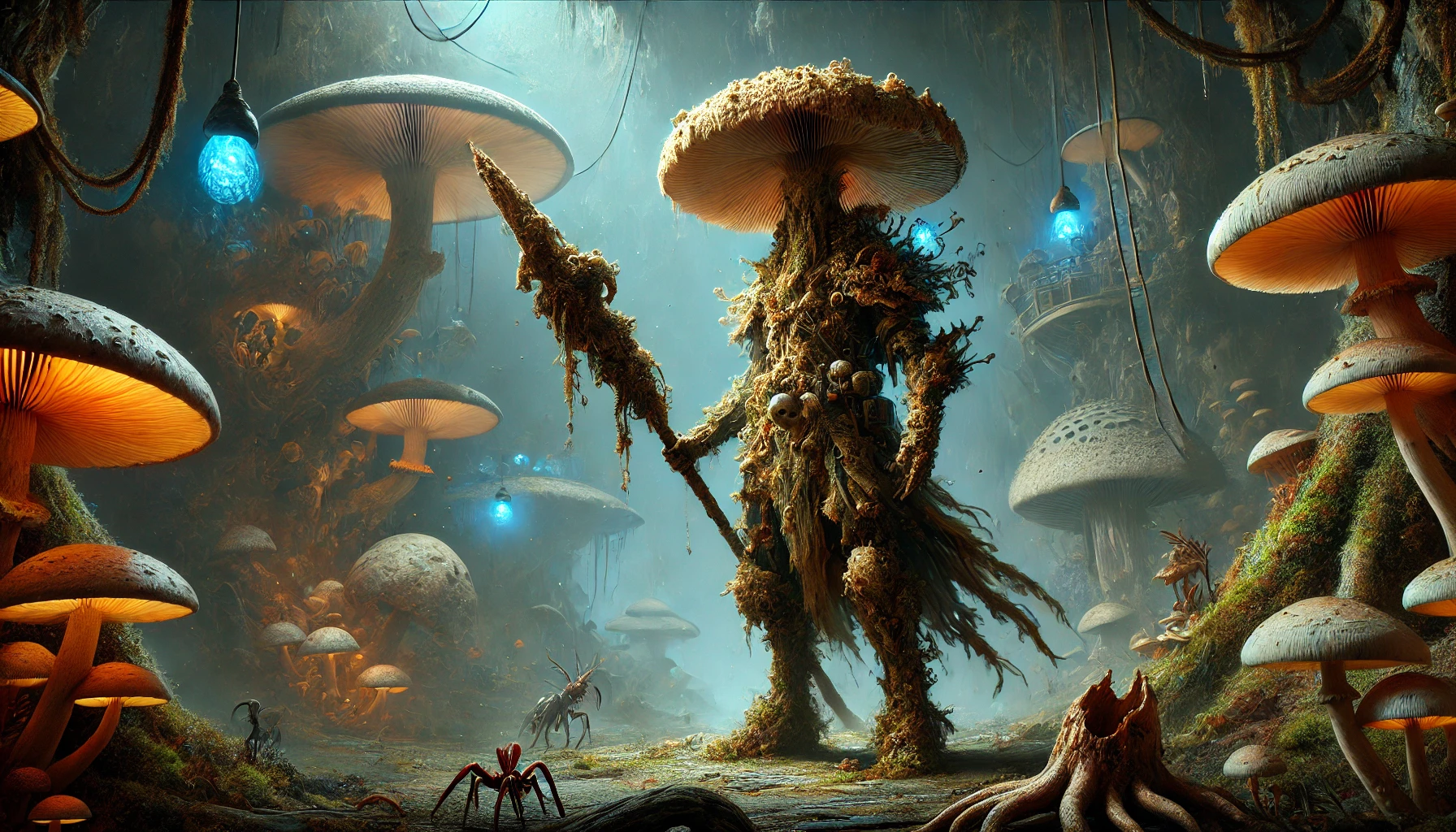
At one of the rare exits to the surface, deep within the Underdark, lies the Myconid Outpost. In a vast cavern saturated with moisture and illuminated by the bioluminescent glow of fungi, this extensive colony has lived and thrived for generations. The location is ideal for creatures seeking solitude and peace, as few ever venture here.
Location and Environment
The outpost occupies most of the cavern, whose ceilings rise high into the darkness. On the Underdark side, the settlement borders hunting grounds frequently visited by displacer beasts. Though these creatures pose a threat to most, they have become the primary food source for the myconids, who have mastered the art of tracking and trapping them. Thanks to this resource, the settlement is entirely self-sufficient in sustenance.
On the other side, the distant edge of the cavern leads to an ancient passage to the surface. However, this route has remained unused for several centuries and is now overgrown with thick fungal vegetation. Unlike most denizens of the Underdark, myconids have no need for contact with the outside world, and thus, the outpost remains a secluded haven, hidden from travelers and other sentient beings.
Way of Life and Structure
The myconids of the outpost live a measured, cyclical existence, fully immersed in meditative harmony with nature. They avoid interfering in the affairs of other creatures and do not tolerate external intrusion into their own. Their settlement consists of a network of fungal structures seamlessly woven into the cavern’s landscape, serving as homes, nurseries for new colony members, and hubs for exchanging thoughts through their spore-based communication networks.
Due to its isolation and self-sufficiency, the outpost is nearly unknown to other Underdark inhabitants, and the myconids do everything they can to keep it that way. The only disruption to their monotonous existence is the regular hunts for displacer beasts, which have become an integral part of their life cycle. Otherwise, their world remains untouched by time and external influences.